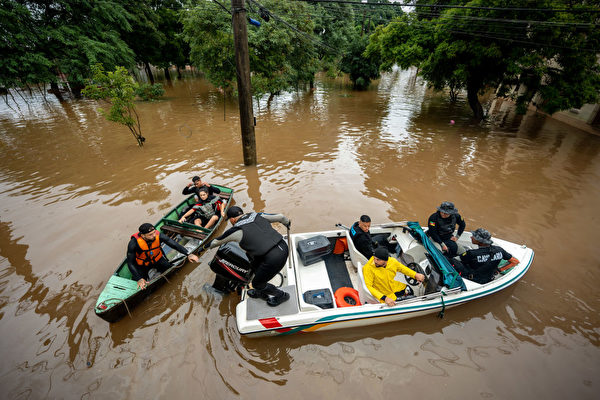Severe Rainfall in Rio Grande do Sul, Brazil Leads to Rising Death Toll
In the state of Rio Grande do Sul, Brazil, the local civil defense authorities reported on Sunday (May 12th) that the death toll from the torrential rain has increased from 136 to 143, with an additional 125 people missing.
According to Reuters, on Saturday night, the government announced emergency spending of approximately 12.1 billion reais (2.34 billion US dollars) to respond to the crisis. Out of the state’s population of around 10.9 million, over 537,000 people have been displaced due to the flooding.
The federal government stated in a press release on Saturday that with this new funding, over 60 billion reais of federal funds have been provided to Rio Grande do Sul.
The Brazilian National Meteorological Institute issued a notice on Friday (May 10th) afternoon, warning that weekend rainfall could exceed 15 centimeters (nearly 6 inches), potentially exacerbating the flooding. The agency also mentioned the likelihood of strengthening winds and rising water levels in the Patos lagoon near the state capital, Porto Alegre.
Weather forecasters indicated on Saturday night that more rainfall is expected on Sunday, heightening the risk as many rivers are already at capacity or overflowing.
In one of the hardest-hit cities in the state, Canoas, Paulo Cezar Wolf’s small wooden house and all his belongings have been completely submerged. Wolf and six neighbors are now living behind a truck, where they cook, eat, and sleep.
The Meteorological Research Institute predicts that starting from Monday (May 13th), the arrival of a large amount of cold dry air will reduce the likelihood of rainfall. However, this also means a drastic drop in temperatures, reaching around freezing by Wednesday. This poses a risk of hypothermia for those living in damp and powerless areas.
In Brazil, the poor often reside in houses constructed from materials like wood, which are more susceptible to extreme weather damage in unregulated areas such as low-lying regions or steep slopes.
“We cannot say the worst is over,” said Governor Eduardo Leite of Rio Grande do Sul on social media on Friday. The day before, he estimated that the state’s reconstruction would require 19 billion reais (3.7 billion US dollars).
Located at the convergence point of tropical and polar atmospheric currents, Rio Grande do Sul experiences weather patterns that frequently bring heavy rainfall or drought.
Local scientists believe that these patterns are intensifying due to climate change.

